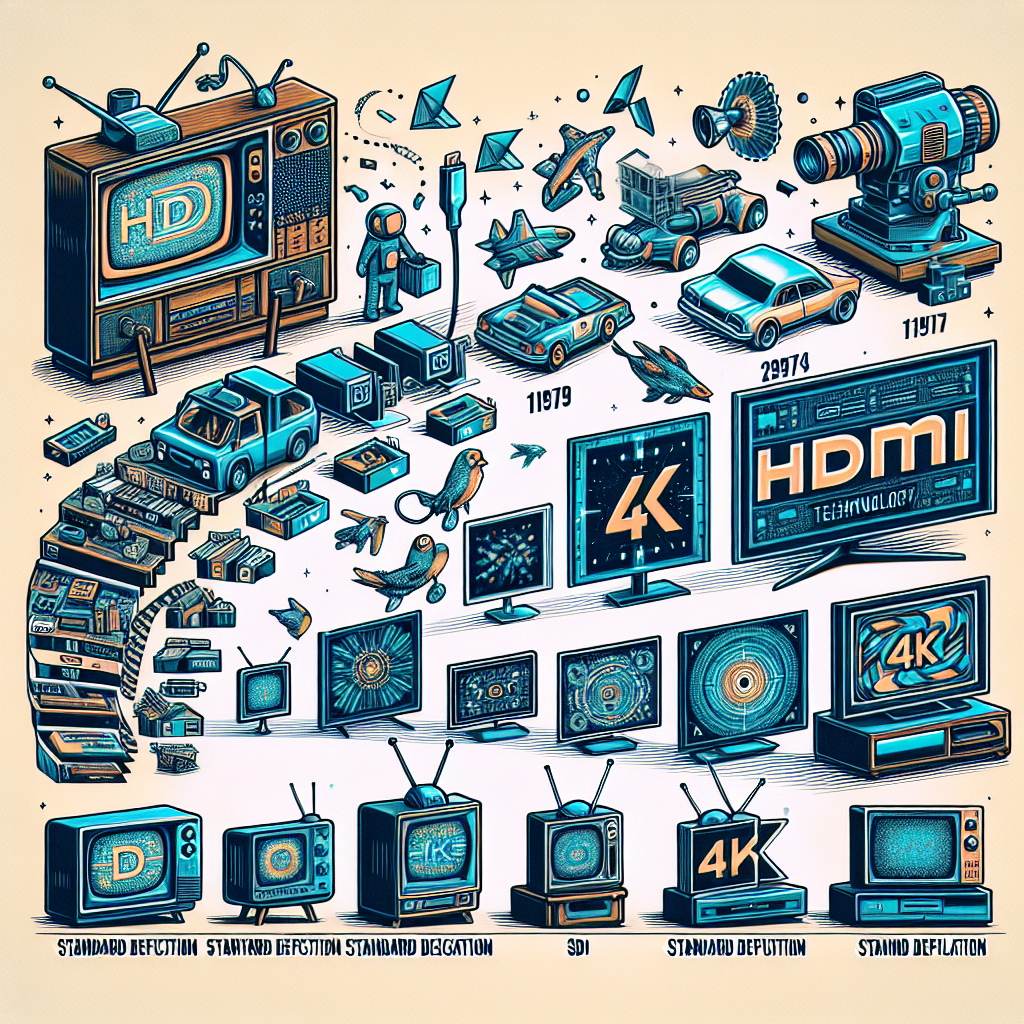Your cart is currently empty!
The Evolution of HDMI: From SD to 4K and Beyond

HDMI, or High-Definition Multimedia Interface, has become the standard for connecting audio and video devices in our homes and offices. But how did we get from the early days of Standard Definition (SD) to the crystal-clear images of 4K resolution and beyond? Let’s take a look at the evolution of HDMI and how it has transformed the way we experience entertainment.
The first version of HDMI was released in 2002, supporting SD resolutions up to 720p and 1080i. It quickly became the preferred method for connecting DVD players, cable boxes, and game consoles to our televisions, offering better quality and convenience compared to the older analog connections like RCA and S-Video.
As high-definition content became more prevalent, HDMI continued to evolve. In 2006, HDMI 1.3 was introduced, adding support for higher resolutions and refresh rates, as well as new audio formats like Dolby TrueHD and DTS-HD Master Audio. This allowed users to experience immersive surround sound and sharper images on their HDTVs.
With the rise of 4K Ultra HD TVs in the early 2010s, HDMI needed to adapt once again. HDMI 2.0 was released in 2013, supporting 4K resolutions at 60 frames per second and higher bandwidth for faster data transfer. This meant that users could enjoy stunning detail and clarity in their movies, TV shows, and games like never before.
But the evolution of HDMI doesn’t stop there. In 2017, HDMI 2.1 was announced, promising even higher resolutions and faster refresh rates. With support for 8K resolution at 60 frames per second and 10K resolution at 120 frames per second, HDMI 2.1 is paving the way for the future of home entertainment.
In addition to higher resolutions, HDMI 2.1 also introduces new features like Dynamic HDR for improved contrast and color accuracy, Variable Refresh Rate (VRR) for smoother gaming experiences, and eARC (Enhanced Audio Return Channel) for high-quality audio passthrough.
As we look towards the future, HDMI will continue to evolve to meet the demands of the latest display technologies. From SD to 4K and beyond, HDMI has come a long way in providing users with the best audio and video experience possible. Whether you’re watching your favorite movie or playing the latest video game, HDMI will be there to deliver stunning visuals and immersive sound for years to come.
#Evolution #HDMI,hdmi

Leave a Reply